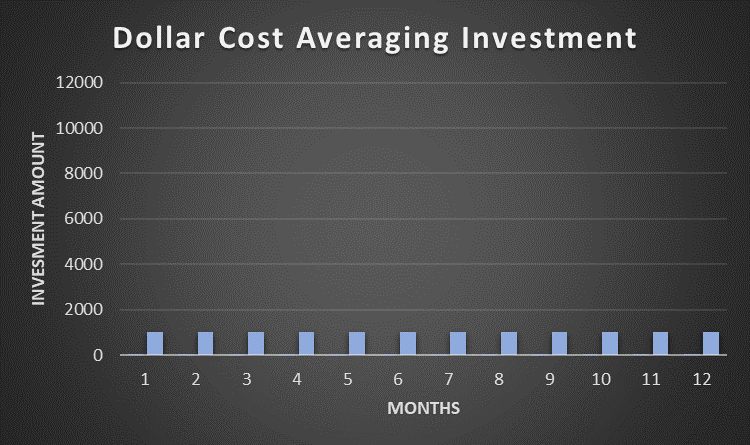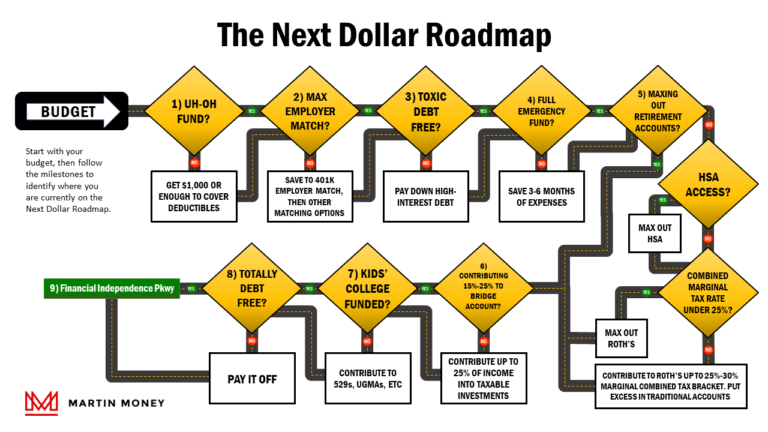Dollar Cost Averaging vs Lump Sum: Which is Better?
Lump sum investing is more likely to produce superior gains over time compared to dollar cost averaging, but dollar cost averaging does reduce the risk of purchasing investments before a market downturn.
By far, the majority of Americans save and invest gradually using a lifetime of small deposits directed into the investment vehicles of their choice.
These savings are usually taken from direct payroll deductions and placed into a 401(k) or another retirement or investment vehicle.
Occasionally, however, you might find yourself the recipient of a windfall from a bonus at work, the sale of valuable property, an inheritance, or some other large infusion of cash.
Let’s assume that in such a scenario you want to take all or some portion of this cash and invest it.
Should you invest all of this money at one time or spread out your contributions over the course of weeks, months, or longer?
If I invest everything at once, couldn’t I lose a large portion of my investment if the value of my securities suddenly decreases?
On the other hand, if I spread out my investments won’t my money lose valuable time that could be spent gaining a return?
The answer to both of these questions is yes.
Today, we want to highlight the pros and cons of investing a large sum of money at one time (lump sum investing) versus slowly investing those funds over an extended period (dollar cost averaging).
In chart form, the two methods would look something like this for a $12,000 investment…


Again, the same amount is invested. The only difference is the timing of the investment contribution(s).
Dollar Cost Averaging and Lump Sum Investing each has its plusses and minuses, but after reading this we hope you’ll have more confidence about which route works best for you.
We won’t cover exactly which accounts you should use in this post, but if you want some ideas, please go locate your financial milestone on the Next Dollar Roadmap which will help you optimize that decision.
Why Wouldn’t I Want to Invest as a Lump Sum?
We harp regularly on the importance of giving your investments time to grow and the miraculous power of compounding interest. There’s simply not a more reliable way to build wealth.
If that was your only consideration, the decision to invest a lump sum would be easy. There wouldn’t be any better time than now to get those dollars working on your behalf.
However, the values of stocks, bonds, and nearly every other investment is subject to change and do so quickly.
Just look at any stock ticker over time. The rapid ups and downs minute by minute quickly illustrate the potential for one to gain or lose quickly through investing.
And if you invest a large sum of money at one time, you could potentially lose a large portion of it quickly.
This timing risk is what gives most people an uneasy feeling about lump sum investing.
While not really the same (as we’ll see in a minute), I can see how one might liken lump sum investing to gambling.
With lump sum investing, the potential does exist for a sudden and nauseating loss in the value of one’s principal investment, but…
Why You Should Potentially Invest Your Contribution as a Lump Sum
Statistically, a sudden loss from a lump sum investment isn’t something you’re likely to experience. At least, not if you hold your investment over an extended period of time.
In fact, most of the time Lump Sum Investing will outperform Dollar Cost Averaging.
And the longer you hold your stake in an investment, the less likely you are to experience a loss compared to dollar cost averaging because the level of risk in a portfolio decreases the longer it’s held.
This also means the longer it takes you to invest a given amount using dollar cost averaging, the more lump sum investing will tend to be the superior choice.
The reason has nothing to do with market timing and everything to do with the ability of your initial investment to gain value over time.
For example, let’s assume someone offers you the incredible option of receiving $5,000,000 today or $100,000 per year for 50 years.
Which one would you take?
If you understand the time value of money, you’d be a fool not to take the lump sum because the final $100,000 payments will be remarkably less valuable 40+ years from now than having all those payments to invest starting now.
What if someone offered you $5MM today or $2.5MM today and another $2.5MM in a year?
The same logic applies even if the payments are much closer together. The lump sum is superior.
Finally, even if you move the second $2.5MM payment up to tomorrow, today’s $5MM one-time gift is more valuable.
I know we’re splitting hairs here, but any amount of money now is worth more than the same amount at any point in the future. This is the essence of the Time Value of Money.
By spreading out contributions with dollar cost averaging, you’re withholding principal on the sidelines that could otherwise be growing in value.
But does the history of market returns support this?
Yes, it does.
The Record of Dollar Cost Averaging vs Lump Sum Investing
There have been many studies that corroborate the concept we’ve just highlighted. We’ll refer to one published by Northwestern Mutual in 2021.
In their research, analysts studied the rolling 10-year returns on $1MM invested at once as a lump sum and invested evenly over 12 months ($83,333.33/month) and then held for nine years.
Furthermore, researchers did this for portfolios invested 100% in stocks, a 60/40 split between stocks and fixed income, and 100% in fixed income.
(Click here for more about asset allocation.)
The results were as follows:
Lump Sum Outperformed DCA | DCA Outperformed LSI | |
100% Stock | 75% | 25% |
60/40 Stocks/Bonds | 80% | 20% |
100% Fixed Income | 90% | 10% |
The same results held true for 100% stocks, 100% bonds, and everything in between. In no asset allocation was dollar cost averaging more likely to outperform lump sum investing.
Another study conducted by Yale University showed that lump sum investing outperforms dollar cost averaging even when investing in Bitcoin, T-Bills, and gold.
And when did dollar cost averaging outperform lump sum? During severe market crashes like 1974, 1987, 2000, and 2008. That’s it.
So, unless you have poor timing, lump sum investing will likely provide you with a better return.
Average J Inherits Some Money
Suppose our good friend, Average J, Average J, has inherited $120,000 from a long-lost relative.
Furthermore, let’s jump into our time machine and assume that Average J was making this decision on November 1, 2022. (That’s just over 6 months preceding the day I’m writing this.)
Average J wants to invest the money but isn’t sure if he should invest it all now at one time or spread it out over the course of the next 6 months.
To make this example a little more realistic, we’ll assume Average J wants to invest the entire amount in the Vanguard Total Stock Market fund (VTSAX).
In the table and graph below, we’ve recorded the net asset value (NAV) of VTSAX for the first day of each month since November 2022 as well as the overall performance of both a lump sum and a series of equal dollar cost average investments.
The market hasn’t exactly been rosy over the last six months, but let’s see how this shakes out…
VTSAX NAV | Lump Sum Value | DCA Value | |
November 1st | $94.16 | $120,000.00 | $20,000.00 |
December 1st | $99.35 | $126,614.27 | $41,102.38 |
January 1st | $93.10 | $118,649.11 | $58,516.67 |
February 1st | $100.67 | $128,296.52 | $83,274.69 |
March 1st | $96.81 | $123,377.23 | $100,081.68 |
April 1st | $99.37 | $126,639.76 | $122,728.19 |
Here is the same data in a graph…

As you can see, the dollar cost averaging method makes up a lot of ground over time, but it never quite reaches the same value as the lump sum.
The difference between the two at the end of six months is $3,911.57 in case you’re wondering. This represents 3.26% of the total invested amount of $120,000.
It’s also worth pointing out that Average J only had to make one visit to his brokerage’s website to invest the lump sum.
With dollar cost averaging it would require a little more effort to set up recurring investments, but it’s more work nevertheless.
So, What Should I Do?
If you’ve read all this and you’re still uneasy about the prospect of dumping a large infusion of cash into an investment at one time it’s okay to take some time to make that commitment.
Is it optimal? Probably not, but there is a higher degree of risk associated with dropping everything in at once even if you are likely to be compensated in the form of higher returns.
You might consider spreading out the investment over the course of a few weeks or maybe even months but I’d caution against stretching it out beyond six months, even for very large amounts.
The math just doesn’t support allowing your investable assets to sit in cash for very long.
Personally, when we have received large chunks of cash from a bonus we have invested them as a lump sum.
Once or twice we did this during a market correction, but even in those cases, we forced ourselves to invest within a specified time period which was always by the end of the month for us.
Was it always the perfect choice? No, but no one was coming along with a crystal ball and we knew we were investing for the long term which gave us peace of mind.
Thankfully, all of the lump sum investments are in the black for us, even one we made in 2023.







